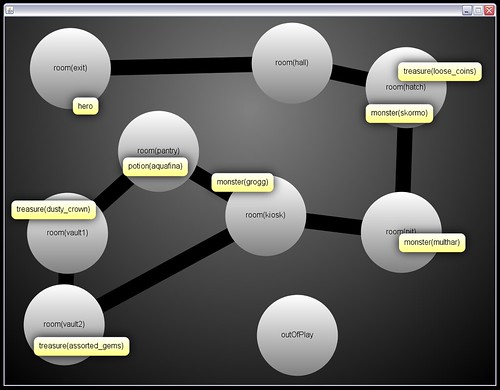Game Designers Design Players Too

A sketch for a "cute little dungeon crawl"
I’ve got a whole philosophy of game design I’m sitting on here, but today I’d like to share just one little provocative tidbit: game designers design players too.

A sketch for a "cute little dungeon crawl"
I’ve got a whole philosophy of game design I’m sitting on here, but today I’d like to share just one little provocative tidbit: game designers design players too.
Here’s a nice, simple game prototype that explores the core movement, inventory, and timing mechanics of Motherload that took just 10 minutes to design and 60 minutes to program using our new design tool. Rather, this is the half of a nice, simple game prototype that supports human play testing, but there is more to it than that.
On Friday, May 29, 2009, Mark Henne from Pixar came to UCSC and gave a talk on crowds in the movie Wall-E. You can watch the video here:
https://slugtube.soe.ucsc.edu/play-video.php?ID=1070
I was impressed by the complexity of the AI underlying the characters that comprise the crowds, another reminder of just how complex seemingly simple real-world behaviors can be. I was also struck by how the entire process was optimized to ensure that the artists could, if desired, take a single character from a crowd and manually change its look and behavior. This is consistent with the entire filmmaking process at Pixar, which is optimized for complete artistic control over the end product. Games, in contrast, are much more willing to accept the limitations of the game engine being used.
Powered by WordPress